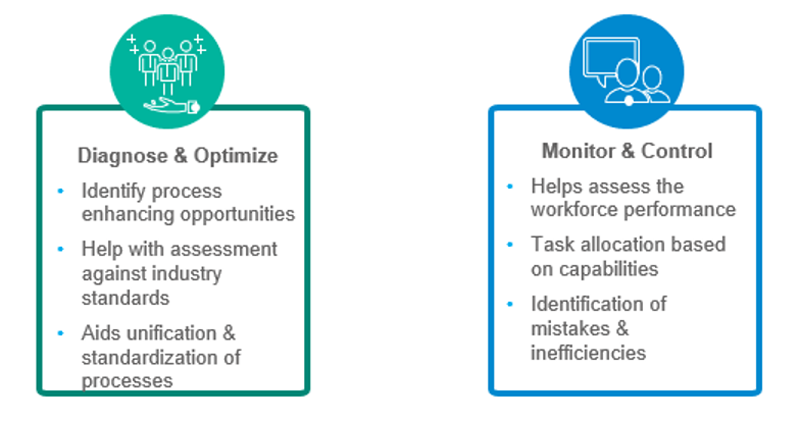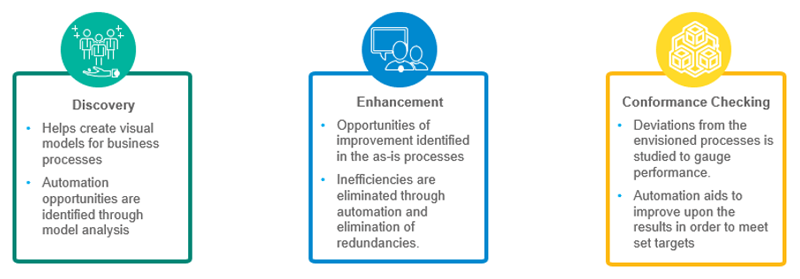
Building business transforming potential with RPA and process mining
Overhaul of supply chain process in industries such as Healthcare, BFSI etc. is going to drive adoption of process mining and RPA technologies in the coming years. Much success has been observed in processes such as mortgage processing, customer onboarding, legal documents, claims etc. and these have remained the drivers of adoption. Vendors of process mining technology have been proactive in making their offerings more wholesome, by identifying the need to have strategic relationships with complementary technology providers, such that the subsequent steps become easy to execute. This is further driving market growth for the technology. As automation is one of the major follow up activities, the presence of RPA vendors in such partnerships is more prevalent. Other complementary technologies include Business Intelligence (BI), Cloud, Business Process Management (BPM) etc.
Another driver of transformational potential for process mining and RPA industries has been development of built-in capabilities such as Artificial Intelligence (AI), Machine Learning (ML), Natural Language Processing (NLP) to further enhance the handling of data, that can be structured or unstructured. The offering is available both on cloud and on-premise model to give the flexibility in adoption to organizations based on their specific needs.
Lastly, technology providers have understood that awareness about the solutions is one of the major factors in removing the apprehension about adoption. So, they have developed extensive training and certification programs for their customers and partners. They have kept a double-pronged approach here by providing education on online platforms and collaborating with universities to fund research in the field in order to spread awareness.
Amalgamation of process mining & RPA solutions:

A case study – Understanding the processes to enable transformation
For a major Europe-based multinational corporation active in the fields of health, nutrition and materials, Wipro performed rapid process discovery for 3 weeks, covering 120+ processes across 5 functions. Our process repository was utilized to identify automation potential. Ultimately, Wipro recommended multiple improvement opportunities with implementations encompassing business analytics, hyper-automation and customer experience improvement solutions. $5.7 Million worth of potential savings in Phase 1 and over $2 Million additional annualized savings were projected with a payback period of less than 2 years.
To tackle the challenge at the client’s end, we start with understanding the current processes first. Process Mining, thus, becomes an integral part from the very beginning. It helps us understand the as-is processes and once the understanding is established, it becomes a clear guide for executing transformation and automation with the help of RPA.
Wipro has developed in-house capabilities in Process Mining and Robotic Process Automation, and has also forged partnerships with market leaders.
We are -
The right approach to automation success
RPA presents easy to implement options that are inexpensive as well as quick to execute. Also, RPA can significantly streamline user interaction by automating tedious and boring activities and at the same time, the unfaltering repetition capability ensures negligible errors. These automations are easy to understand and use, even when complicated systems are involved. But the bottom-line remains that the processes are to be understood in whole before applying any automation, else there is the possibility of having a misaligned implementation, which can defeat the whole purpose of the activity.
Vartul Mittal
Vartul Mittal is a technology and innovation specialist at Wipro.
Vartul focuses on helping clients accelerate their digital transformation journey. He has 14+ years of global business transformation experience in management consulting and global in-house centers in intelligent automation, advanced analytics and cloud adoption.
Vishal Yadav
Vishal Yadav leads transformation go-to-market activities for iCORE, Wipro with a special focus on alliances. He manages growth marketing and demand generation initiatives for automation and new age SaaS platforms and solutions